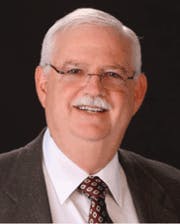Organizations that compete for market share in products and services tend to cooperate and collaborate on safety. This mindset has led to a cooperative, kaizen environment in which the only winner is the one who can do the same things better than everyone else. Sure, we look for those tiny improvements and efficiencies and we are open to the next big program that can create a step-change, but we basically are all operating safety with the same strategy (or lack thereof).
It is the lack of safety strategy that is concerning. Few organizations have one. They have goals and wishes and programs designed to improve workplace conditions and enhance the cognitive and behavioral factors in workers that tend to lower accident probability. They have safety departments that focus on compliance, training and reactive safety activities. Since these mirror other organizations' safety efforts, there is an assumption that these are the right (and only) things to do. There are very few key processes in business that are managed with such basic lack of strategy.
See Also: Workplace Safety Management Best Practices
At the core of this thinking is a more basic paradigm: business is what we do and safety is just a nagging problem that can keep us from doing it if we are not careful. Business is full of strategy. Rolling out a new product or service involves massive strategic thinking and planning. We seek competitive advantage and market share. How can we do things better, cheaper, faster, more fun or efficient than our competitors? We even look for products and services that don't yet exist. We do market research to determine feasibility and we test the new stuff on potential customers before we roll it out to the marketplace. After we enter the marketplace, we analyze competing products to make sure we maintain competitive advantage and look for further improvements we can make in our next generation of product.
Is Safety Obvious?
So how much of this strategic thinking carries over to our safety management? Unfortunately, very little. We either assume that what it takes to manage safety is obvious and we already are doing it, or that it does not deserve the same attention as our true business activities.
We carry on as usual and try to fail a little less this year than last. We look for small improvements or new programs or better computer-based training modules. We audit our facilities and improve guarding and traffic control. We investigate accidents and share lessons learned with our workers. We give little thought to asking our customers what they need and want in safety. We don't try to differentiate our safety efforts from those of our competitors. We simply try to make our results outdo their results.
Michael Porter said, "Strategy is the creation of a unique and valuable position, involving a different set of activities." That doesn't sound like most safety programs. They don't strive to be unique or even valuable.
Most safety strategies are far from unique. The goal isn't to be different; the goal is to do the same things better than others. Why bother creating uniquely effective structure, communication or training? Why bother asking the customers what they really want or need? Just give them the same thing everyone else gets and remind them to be careful.Why waste the time of top executives creating a strategy and value proposition for safety when a generic model is available? Let the top leaders spend their time on the real business and delegate safety to a specialist who knows the generic model. What other key value of the organization is managed without a strategy and delegated to someone outside the top leadership circle?
Value Added?
Porter goes on to say, "Strategy requires you to make trade-offs in competing – to choose what not to do." Most organizations would not even consider stopping one of their safety programs or activities. After all, more IS better, right?
Many safety programs that once were a good idea have run their course and no longer add value. Rather than stopping them, we give them CPR and try to keep them breathing. After all, a consultant told us that if we stopped, our accident rates would go back up.
In business activities, we have adopted programs like "Lean," that challenge us to eliminate activities that don't add value. We look for newer and better ways to do things in business but not so much in safety.
Porter ended his definition by saying, "Strategy involves creating ‘fit' among a company's activities." How many safety activities in your organization really fit with your productive activities? A lot of safety programs were purchased or licensed from consultants who virtually did nothing to make their program fit your culture. In fact, many of them asked you to make your culture fit their program.
In too many cases, safety activities clash and compete with production. Many workers view safety and productivity as conflicting priorities. The safety manager tells you one thing and your "real" boss tells you another. The lack of fit is a telltale sign of the lack of strategy.
An Alternative
The alternative to this type of generic safety management is a strategic approach based on a business model. Do some market research and listen to the voice of your customer: the worker. Create a distinctive strategy to meet the needs of your unique culture.
Choose a management style, training and programs that fit those needs as well as your production processes. Extinguish the idea that safety is something else you do and make it the way you do production. Have the courage to eliminate activities that don't add value. If non-value activities are mandated, customize them to fit.
Create a strategy in which all safety decisions are made and all programs are evaluated. By doing this, you'll know exactly how you produced those excellent results so you can duplicate them next year.
Terry L. Mathis, the coauthor of STEPS to Safety Culture Excellence and founder and CEO of ProAct Safety, was named one of "The 50 People Who Most Influenced EHS" by EHS Today. As an international expert and safety culture practitioner, he has worked with hundreds of organizations customizing innovative approaches to achieve and sustain safety culture excellence. He has spoken at numerous company and industry conferences, and is a regular presenter at NSC, ASSE PDC and ASSE SeminarFest. He can be reached at 800-395-1347 or [email protected].
About the Author
Terry L. Mathis
CEO
Terry L. Mathis is the co-author of “STEPS to Safety Culture Excellence” and founder and CEO of ProAct Safety. In 2013, EHS Today named him one of “The 50 People Who Most Influenced EHS” for the third consecutive time. He can be reached at 800-395-1347 or [email protected].


